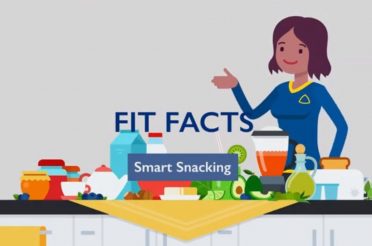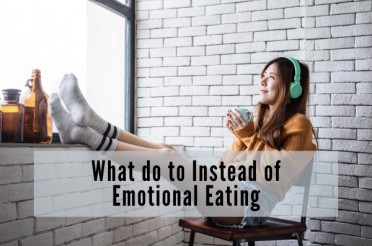[ad_1]
Is rice your favourite food staple?
 Having grown up in a Chinese household, rice is an integral staple for my family. At dinner every night there was a pot of steaming fragrant white rice waiting to accompany the array of delicious dishes my mom cooked. It was not until I began to take interest in nutrition and healthy eating that I expanded what I knew about rice. Not exclusive to Chinese cuisine, rice finds a place in dishes around the globe, particularly in Asia. Rice is a staple in many diets. This article will cover several common rice varieties, including white rice varieties, whole grain brown rice, and black rice
Having grown up in a Chinese household, rice is an integral staple for my family. At dinner every night there was a pot of steaming fragrant white rice waiting to accompany the array of delicious dishes my mom cooked. It was not until I began to take interest in nutrition and healthy eating that I expanded what I knew about rice. Not exclusive to Chinese cuisine, rice finds a place in dishes around the globe, particularly in Asia. Rice is a staple in many diets. This article will cover several common rice varieties, including white rice varieties, whole grain brown rice, and black rice
Types of Rice and their culinary uses
The fluffy, soft white rice that is eaten with many Asian dishes actually comes in many varieties that each have their own distinct flavour and texture.
Basmati white rice is typically used in Middle Eastern Asian cuisines – curries and pil.
Jasmine white rice is a more fragrant, fluffy rice that is commonly associated with Chinese dishes.
Sushi rice is made with medium grained white rice, which is shorter than the long- grained Basmati and Jasmine.
Medium grain rice has a sticky texture, perfect for making delicious sushi rolls.
Short grained rice is commonly used for creamy rice dishes such as Italian risotto, short grain rice absorbs lots of flavour and usually does not have distinct grains when cooked.
Brown rice has a nuttier wheat-like flavour and a chewier texture.
Black rice has an intense indigo colour when cooked. Its rich, beautiful colour creates many visually appealing dishes, and due to its natural, slightly sweet flavour is often used to make rice desserts such as rice puddings. As a smaller grain, it is also very versatile in place of dishes such as risotto or porridge-like foods.

Rice nutrition and parts of the grain

Each rice grain contains three edible parts – the bran, germ, and endosperm. The most nutritious parts are the bran and germ. The germ, or “seed”, is the part which grows into a new grain. It contains the most nutrients, including B vitamins, healthy fats, and even protein! The bran, on the outer layer of the grain, has an abundance of fiber and antioxidants.
With white rice, processing removes both the germ and bran, only leaving the endosperm. The endosperm, composed of starch, provides energy through carbohydrates to the germ in the grain. It contains the least amount of nutrients when consumed. Because of its starchy composition, white rice is a great simple carbohydrate for quick energy when exercising.
Unpolished rice such as brown rice and black rice, which contain all three parts of the grain, hold lots of fiber and vitamins from the bran and germ. It has higher overall nutritional value than white rice and provides sustained energy and satiety for a longer period of time.
Give Alternative Grains a Try!
I ate white rice for most of my life until I gradually introduced other varieties as dinner time staples. My grain choice is always changing – I like to experiment with different kinds. It is a great opportunity for me to try new foods! My current “rice” options include white rice, quinoa, sprouted brown rice, and millet.
Why don’t you give one of my new twists on a traditional Asian favourite a try?
Alternative mixed grains with nut and seed congee (porridge)
What you need:
¼ cup each Sprouted brown rice, black rice and glutinous rice
5 pieces Walnut, skinned (soak in warm water and rub skins off – the skins are bitter)
25g (4-5 pieces) red dates
¼ cup rolled oat (steel cut oat)
1 tbsp hemp heart
1 tbsp flaxseed
½ to 2 cups water, depending how thick you like your porridge
Salt to taste
How You Prepare
 Wash the sprouted brown rice, black rice and glutinous rice
Wash the sprouted brown rice, black rice and glutinous rice- Put them in a rice cooker*, add red dates, chopped walnuts, oat, flaxseed and hemp hearts
- Select the porridge cooking function of the rice cooker. After cooking, keep it in the cooker for 20 minutes
- Season with salt to taste, serve immediately.
If you don’t have a rice cooker, you can prepare congee in a pot on the stove by boiling for 30 – 45 minutes.
An easy step towards boosting one’s nutrition might be making a small swap during lunch or dinner time. You may find yourself enjoying the new textures and natural flavours of whole grains! Be sure to check out the various types of rice next time you go grocery shopping!
Looking for more simple meal planning tips and healthy recipes for a healthier lifestyle? Sign up for our weekly newsletter for a healthy recipe of the week (and nutrition articles and videos with a balanced living philosophy to help encourage healthy habits but still save room for your favorites). Our nutrition newsletter is written by the Online / Calgary Nutritionists on our team who each hold a professional Registered Dietitian license to ensure you are getting credible advice.
[ad_2]
Source link







